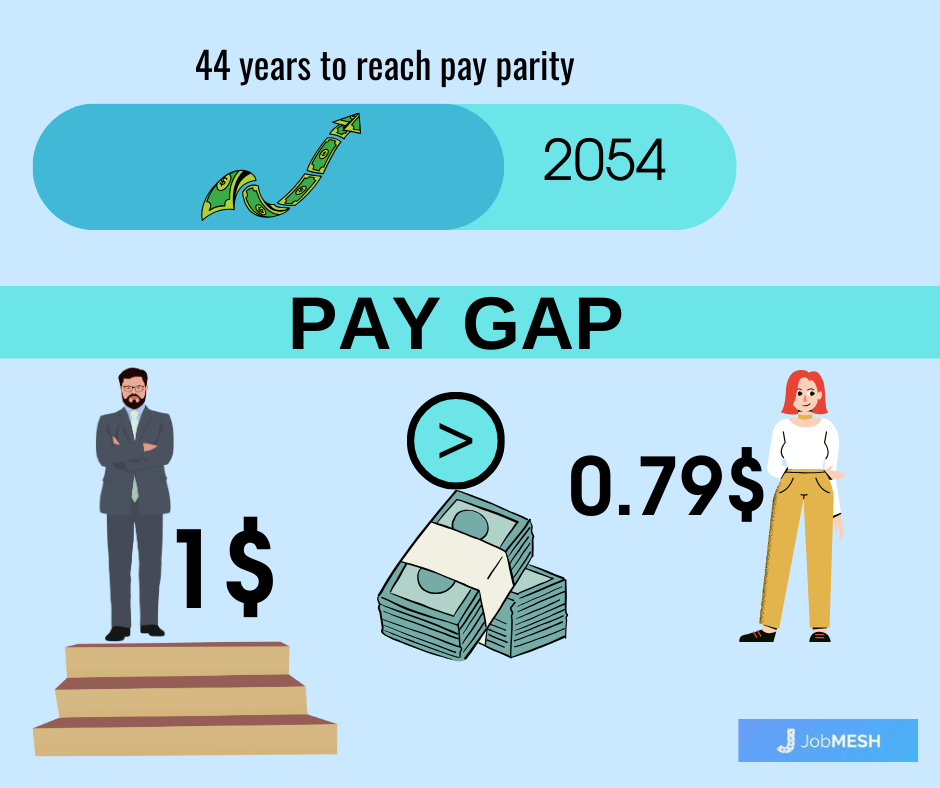Pay Equity & Discrimination for Women: Last Decade Context
This short report was originally published on the IWPR website but was taken down for unknown reasons. Given the valuable projections and important perspectives it offers, we have republished it on JobMESH.

Women are almost half of the workforce. They are the equal, if not main, breadwinner in four out of ten families. They receive more college and graduate degrees than men. Yet, on average, women continue to earn considerably less than men. In 2014, female full-time workers made only 79 cents for every dollar earned by men, a gender wage gap of 21%. Women, on average, earn less than men in virtually every single occupation for which there is sufficient earnings data for both men and women to calculate an earnings ratio.
IWPR tracked the gender wage gap over time in a series of fact sheets updated twice per year. According to the research, if change continues at the same slow pace as it has done for the past fifty years, it will take 44 years—or until 2059—for women to finally reach pay parity. IWPR’s annual fact sheet on the gender wage gap by occupation shows that women earn less than men in almost any occupation. IWPR’s Status of Women in the States project tracks the gender wage gap across states. IWPR’s report on sex and race discrimination in the workplace shows that outright discrimination in pay, hiring, or promotions continues to be a significant feature of working life.
Pay equity may be affected by the segregation of jobs by gender and other factors. Irrespective of the level of qualification, jobs predominantly done by women pay less on average than jobs predominantly done by men. Women have made tremendous strides during the last few decades by moving into jobs and occupations previously done almost exclusively by men, yet during the last decade there has been very little further progress in the gender integration of work. In some industries and occupations, like construction, there has been no progress in forty years. This persistent occupational segregation is a primary contributor to the lack of significant progress in closing the wage gap. According to a recent regression analysis of federal data by IWPR, the poverty rate for working women would be cut in half if women were paid the same as comparable men.
IWPR, in collaboration with The WAGE Project, Inc., examined consent decree remedies for sex and race discrimination in the workplace. Consent decrees are court approved settlements of law suits where the defendant does not admit guilt but agrees to the implementation of a set of measures to remedy and prevent future occurrence of potentially unlawful practices. In employment discrimination cases, in addition to individual relief (such as monetary damages for the person(s) who brought the discrimination claim), consent decrees typically mandate organizational remedies such as sexual harassment training, the introduction of new grievance procedures, supervisory training or revised performance management, and reward schemes.